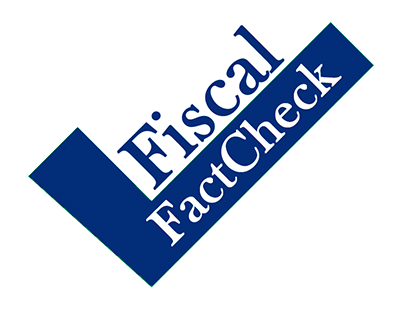Does the Rescissions Bill Cut $15 Billion in Spending?
The President recently updated and revised his request to rescind some spending, removing some cuts from the proposal and clarifying others. The President tweeted:
The HISTORIC Rescissions Package we’ve proposed would cut $15,000,000,000 in Wasteful Spending! We are getting our government back on track.
— Donald J. Trump (@realDonaldTrump) June 5, 2018
While it's true that the proposal would reduce budget authority by about $15 billion, most of that money would not have been spent otherwise. The actual reduction in spending is less than one-tenth of this amount: $1.1 billion. Rescissions are only a very small step forward in restraining spending. For an explanation of rescissions and their special process, see our explainer.
The President’s revised $14.8 billion rescission request (in budget authority) comes from a variety of federal accounts. The largest single area the President asks to rescind is $7.0 billion from the Children’s Health Insurance Program (CHIP) – with $5.1 billion from FY 2017 funds that can no longer be spent and the remainder from a contingency account that likely will not be used (similar cuts were included in the bipartisan omnibus spending bill passed earlier this year). The next largest rescission ($4.3 billion) comes from the Department of Energy's Advanced Technology Vehicle Manufacturing loan program, which has not created new loans since 2011. The Office of Management and Budget indicates that all $5 billion of the Department of Energy rescissions will not decrease outlays. Remaining rescissions come from a variety of government funds and grants across departments, many of which were originally authorized for use in prior years.
On June 5, the President modified his rescission request dropping cuts that affected the Department of Transportation, Hurricane Sandy relief, Ebola disaster funding, and the Environmental Protection Agency. The revisions also made a variety of technical corrections to available funding in certain accounts.
Proposed Rescissions by Department as Modified on June 5 (Millions)
| BA Rescission | Outlays Reduced | |
|---|---|---|
| Dept. of Agriculture | $857 | $244 |
| Dept. of Commerce | $30 | $30 |
| Dept. of Energy | $5,017 | $125 |
| Dept. of Health and Human Services | $8,035 | $198 |
| - CHIP | $7,015 | $0 |
| - CMMI | $800 | $0 |
| - Other | $220 | $198 |
| Dept. of Housing and Urban Development | $39 | $36 |
| Dept. of Justice | $106 | $106 |
| Dept. of Labor | $23 | $0 |
| Dept. of State & International Assistance | $82 | $60 |
| Dept. of Transportation | $145 | $90 |
| Dept. of Treasury | $218 | $216 |
| Other | $283 | $0 |
| Total | $14,834 | $1,105 |
Source: CRFB calculations based on Office of Management and Budget (BA) and the Congressional Budget Office's outlay estimates for the President's original rescissions package. Numbers may not add due to rounding.
As far as whether the rescission cuts are historic, the $14.8 billion in cuts would be the largest amount of rescissions proposed since 1981, President Reagan's first year in office. Between fiscal years 1974 and 2000, Presidents proposed rescissions totaling $76 billion, of which Congress accepted $25 billion. The executive's rescission authority has not been used since 2000, when President Bill Clinton was the last President to submit a formal rescission request.
The President's proposed rescissions would cut the amount of budget authority by almost $15 billion, but because most of those funds would not have been spent anyway, the resulting reductions in actual spending would be just over $1 billion.
Ruling: Lacks Context
- Rescissions, How Do They Work?, a general explainer of rescissions and their special process
- What's in the President's Rescission Request?, about the President's original request
- Does the Rescissions Bill Undermine Children's Health Care?, explaining that CHIP cuts are not likely to affect actual spending

